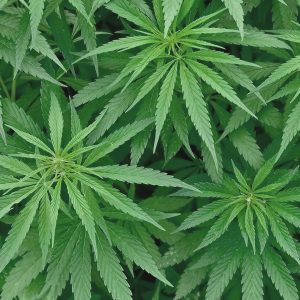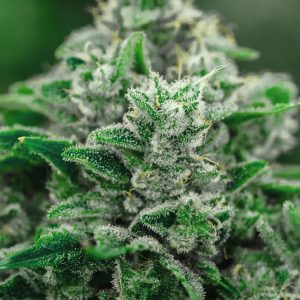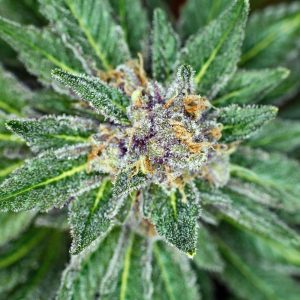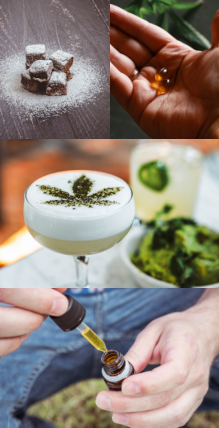
Know Your Variety Type
Different strains or types of Cannabis plants produce different oils in varying ratios. The different oils have their own unique properties which creates a diversity of uses and effects. While many might guess that a particular strain of cannabis is categorized as indica, sativa, or hybrid based on the presence or absence of a particular cannabinoid, or a cannabinoid in a particular volume, it is actually a terpene that determines this important status of a strain. Myrcene, the most common terpene in cannabis, is known to help patients sleep, battling conditions like anxiety and insomnia. If present in a specific strain in a volume greater than 0.5 percent, the strain is considered an indica. If the amount of myrcene is under one half of one percent, then the strain is deemed a sativa.
Sativa
Sativa plants tend to be taller and skinnier and may even be lanky in appearance, with leaves that are thin and pointed. Considered to be uplifting and cerebral, enhancing creativity and productivity. Indicas provide what has been called a “body high,” while sativas deliver more of a “mind high.” Unfortunately, sativa plants require longer to grow and yield less medicine (flowers) than indica varieties. .Affects thinking and perception, stimulates physical activity. Good for eating during the day.
Hybrid
Hybrids are simply new and unique strains that are bred from parents of different types. A hybrid theoretically possesses many or most of the beneficial medical properties of both its parents. Breeders can “cross” any two strains they desire in an effort to create a new strain that delivers the best possible medical efficacy, sometimes for particular diseases like lupus, multiple sclerosis, Crohn’s disease, and epilepsy. Depending on proportions it is suitable for day and evening use.
Indica
Shrub with large, closely spaced leaves.Indica plants are short and stocky, featuring leaves that are broad and “chunky”. Immobilizes and relaxes, develops creativity. More suitable for evening use.


Ways to Consume
Inhalation
The most common form of consumption is to smoke or vape it. Inhalation features the fastest onset of all available methods. This is because inhaling cannabis brings cannabinoid molecules directly into the small capillaries in the lungs, and from there directly into the bloodstream. Once in the bloodstream, they can travel directly to the brain and other parts of the body that contain cannabinoid receptors for an effect that can be felt within minutes.
The kind of cannabis strain or the way it’s delivered can also influence the effects of inhaled cannabis. Smoking involves combustion—burning the leaves and buds of the cannabis plant itself.
Vaporizers, which heat the cannabis sufficiently to vaporize its active ingredients without burning it, provide an inhalable alternative to smoking. But although vaping and dabbing avoid the toxins produced by combustion, they involve more concentrated forms of cannabis such as oils and dabs. In general, inhaled cannabis has a typical bioavailability of up to 56%. What this means is that 56% of the active ingredients become available to the body.
Edibles are more popular than ever, and new infused foods are appearing on the market all the time. Ingestion features the longest onset of any consumption path, requiring 45 minutes to two hours to be perceived, lasting 4-10 hours. This is also considered the least effective ways to absorb a significant amount of cannabinoids. That’s because of a phenomenon called the first-pass metabolism. Before cannabinoids can get into the bloodstream, they must take a “first pass” through the digestive system, which strips out many of the available cannabinoids and accounts for the lag time in feeling their effects. Like many other substances, the liver processes cannabinoids, where a select set of enzymes converts them to a usable form. From there, fat molecules can help transport the cannabinoids into the bloodstream and on to the brain and other tissues. A large percentage of the cannabis in an edible is destroyed in the journey, or simply excreted. This makes the average bioavailability of marijuana edibles hover between 4–12%.
Tinctures are rare in that they can be consumed both sublingually and also via the stomach and liver. It’s recommended to be taken sublingually. They take a very different—and much faster—route for delivering cannabinoids to the bloodstream. Most or all of the active cannabinoids and terpenes will be absorbed sublingually, bypassing the stomach and improving the onset time by several factors. The mucous membranes of the mouth. Because areas such as the base of the tongue, the cheek and the roof of the mouth are highly permeable, cannabis products that come directly in contact with them don’t have to pass through the digestive system and liver in order to become bioavailable. The most permeable area of the mouth is under the tongue, which is why sublingual cannabis preparations are among the fastest and most effective ways to get a consistent dose of cannabinoids.
After that, lozenges held against the cheek or roof of the mouth can also deliver cannabis quickly and consistently. Overall, oral cannabis preparations have a typical bioavailability of 50–75%.





